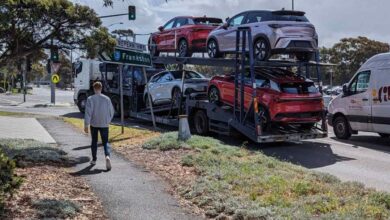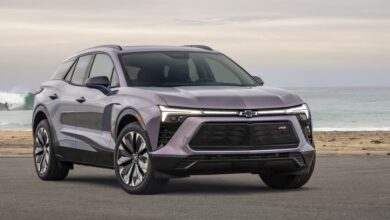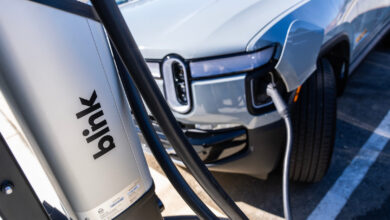Fast-Charging Innovations in Electric Vehicle Batteries
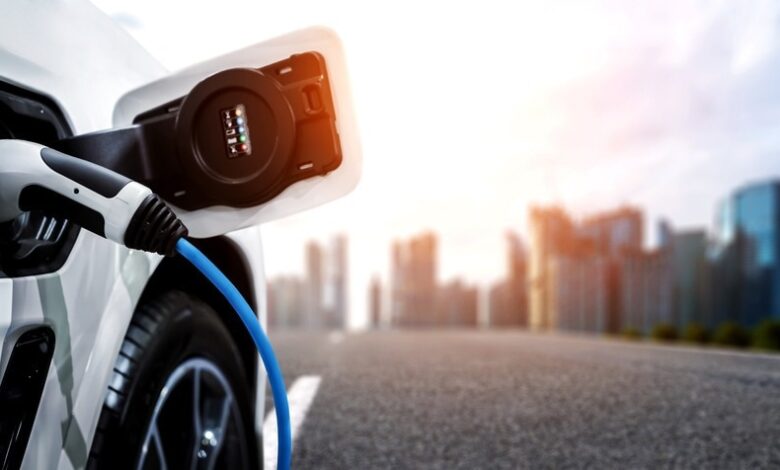
As the world transitions to greener energy, electric vehicles (EVs) However, compared to refueling internal combustion engines, which take only a few seconds to minutes, EVs require significantly more time to recharge. This is one of the main challenges the EV industry faces.
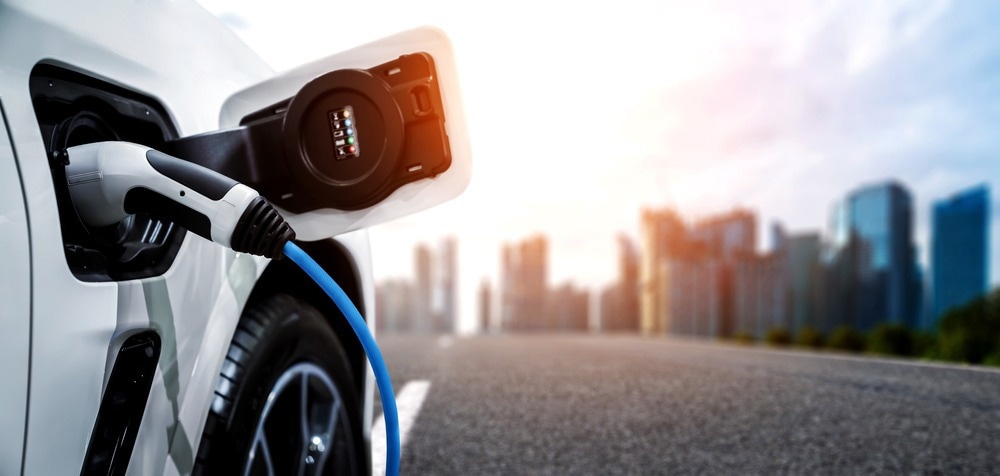
Image Credit: Summit Art Creations/Shutterstock.com
Therefore, research and development in fast-charging technology are crucial for the widespread adoption of EVs, as they address the major concern of long charging times.
Early EVs relied on slow Level 1 and Level 2 chargers, which often took several hours to recharge. However, with the introduction of DC fast charging (Level 3), charging speeds have improved, reducing recharge times to under an hour for some models.1
This article discusses the latest innovations in fast-charging technology and the advantages and limitations of their application.
Download eBook: Electric Vehicle Battery Technology
Technological Advances in Fast-Charging Batteries
Researchers are focusing on several aspects of fast-charging technologies to reduce charging times, including innovations in power electronic converters, heat management systems, and wireless charging technologies. Advancements in these areas are essential for making EVs more practical and appealing by significantly reducing charging times and enhancing overall system efficiency.2, 3
Effective thermal management is critical for fast charging to prevent battery overheating, which can reduce battery life and pose safety risks. To address this, researchers are developing new cooling technologies and materials to dissipate heat more efficiently during high-power charging sessions.
Additionally, advanced converter designs are being developed to manage the high power levels required for rapid charging while minimizing heat generation and energy loss.2, 3
Breakthrough in Extreme Fast Charging Technology
A recent study focused on advancing extreme fast charging (XFC) technology for high-energy Li-ion batteries used in electric vehicles. Researchers found that during XFC, charge transfer across the cathode-electrolyte interface is rate-limiting, affecting the fast rechargeability of Li-ion cells. They discovered that reducing the charge transfer energy barrier at both the cathode and anode simultaneously is crucial to preventing Li plating.3
Compared to the commercially available technology, the researchers extended the lifetime of a prototype, 245 Whkg 1 high-energy 21700 cells, five times during fast-charging and achieved stable XFC for high-energy-density pouch cells. This breakthrough highlights the significance of addressing charge transfer limitations to enable faster and more efficient charging of EV batteries.3
Applications and Benefits
From the consumer’s perspective, the primary benefit of fast-charging technology is the significant reduction in downtime, a decisive factor for those considering switching from internal combustion engine vehicles to EVs. Reduced charging times mean less waiting at charging stations, improving the overall user experience and making EVs more convenient for longer journeys.
Moreover, advancements in fast-charging technology can attract more customers to EVs, leading to significant environmental benefits by reducing the usage of gasoline-powered vehicles.2
Several case studies highlight the successful implementation of fast-charging technologies. For instance, Tesla’s Supercharger network enables users to travel 200 miles with just a 15-minute charging time, allowing Tesla owners to travel long distances with minimal charging stops.4
Similarly, Porsche’s Taycan, charged with its 800-volt charging stations, can travel up to 100 kilometers with just 5.5 minutes of charging, demonstrating the feasibility and advantages of fast-charging technology.5
Challenges and Solutions
Fast-charging technology faces several technical and practical challenges that affect the desirability of EVs. For instance, heat management is a significant challenge since the high currents involved in fast charging can generate considerable heat within the battery, potentially accelerating degradation and reducing lifespan.6
Research on thermal management systems is ongoing to tackle this challenge, focusing on innovative cooling technologies to maintain optimal battery temperatures during fast charging.
For example, in a 2023 study, researchers developed a thermal management system that employs a direct cooling method using refrigerants integrated with the vehicle’s air conditioning system for rapid cooling.7 Through theoretical simulations and experimental studies, this system demonstrated effective temperature control, maintaining battery temperatures within safe limits and ensuring uniform temperature distribution.
This advancement is crucial for enabling fast-charging technology without compromising battery lifespan or safety.7
Enhanced XFC Performance
In another 2023 study, researchers proposed an innovative method to enhance the extreme fast charging performance of commercial lithium-ion batteries without altering their materials or structures.
They utilized active thermal switching to regulate the battery’s self-generated heat and demonstrated that retaining heat during charging and dissipating it afterward significantly boosts charging efficiency and reduces detrimental reactions.8
This method allows batteries to charge 80 % within 15 minutes, meeting the United States Department of Energy’s XFC targets. This technology can be integrated into existing battery thermal management systems, providing a practical solution for the rapid charging of electric vehicles.8
Future Outlooks
Advancements in fast-charging technology are vital not only for the future of transportation but also for global environmental health. In the future, developing universal fast-charging standards could promote interoperability across different vehicle brands and charging networks. Innovations in wireless charging technology could also play a role, offering the convenience of charging without cables.9
In the long term, continued improvement in fast-charging technology will accelerate the adoption of EVs, contributing to the decarbonization of the transportation sector. As charging times decrease and infrastructure expands, the appeal of EVs will broaden, potentially leading to a future where electric vehicles become the preferred mode of transportation.
More from AZoM: Modern Pigments: Innovations in Technology and Industry
References and Further Reading
- Berrehil El Kattel, M., Mayer, R., Ely, F., de Jesus Cardoso Filho, B. (2023). Comprehensive review of battery charger structures of EVs and HEVs for levels 1–3. International Journal of Circuit Theory and Applications. doi.org/10.1002/cta.3579
- Collin, R., Miao, Y., Yokochi, A., Enjeti, P., Von Jouanne, A. (2019). Advanced electric vehicle fast-charging technologies. Energies. doi.org/10.3390/en12101839
- Yao, YX., et al. (2023). Unlocking charge transfer limitations for extreme fast charging of Li‐ion batteries. Angewandte Chemie. doi.org/10.1002/ange.202214828
- Tesla. (n.d.) Charging. [Online] Tesla. Available at: https://www.tesla.com/support/charging (Accessed on May 27, 2024)
- Porsche. (n.d) The Charging Process: Quick, comfortable, intelligent and universal. [Online] Porsche. Available at: https://media.porsche.com/mediakit/taycan/en/porsche-taycan/das-laden# (Accessed on May 27, 2024)
- Keyser, M., et al. (2017). Enabling fast charging–Battery thermal considerations. Journal of Power Sources. doi.org/10.1016/j.jpowsour.2017.07.009
- Dai, N., Long, J. (2023). Research on fast-charging battery thermal management system based on refrigerant direct cooling. Scientific Reports. doi.org/10.1038%2Fs41598-023-38330-3
- Zeng, Y., et al. (2023). Extreme fast charging of commercial Li-ion batteries via combined thermal switching and self-heating approaches. Nature communications. doi.org/10.1038%2Fs41467-023-38823-9
- Ahmad, A., Alam, MS., Chabaan, R. (2017). A comprehensive review of wireless charging technologies for electric vehicles. IEEE transactions on transportation electrification. doi.org/10.1109/TTE.2017.2771619
